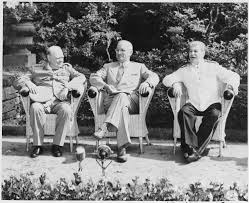Your basket is currently empty!
179 CE: The Eruption of Mount Vesuvius

While the exact date is debated among historians, a strong tradition places the catastrophic eruption of Mount Vesuvius on July 17th, 79 CE. This natural disaster famously buried the Roman cities of Pompeii and Herculaneum under layers of volcanic ash and pumice. The suddenness and immense scale of the eruption preserved these cities in a remarkable state, offering an unparalleled glimpse into daily Roman life. Thousands perished, suffocated by the ash and poisonous gases, leaving poignant casts of their final moments. The ash acted as a natural time capsule, protecting everything from frescoes to household items. Archeological excavations have continued for centuries, revealing an extraordinary wealth of information about ancient Roman society. This devastating event remains a powerful reminder of nature’s unpredictable force.
1453: The Battle of Castillon and the End of the Hundred Years’ War

On July 17th, 1453, the Battle of Castillon marked the final, decisive engagement of the Hundred Years’ War between England and France. This battle was particularly significant as it was the first in European history where gunpowder weapons played a crucial role in determining the outcome. The French, under Jean Bureau, effectively utilized their artillery to devastating effect against the English forces led by John Talbot. The English suffered a crushing defeat, with Talbot himself being killed during the battle. This loss effectively ended English rule in Gascony, a territory they had held for centuries. The Hundred Years’ War officially concluded with this French victory, ushering in a new era for both nations. Its conclusion reshaped the political landscape of Western Europe, solidifying France’s territorial integrity.
1821: Spain Cedes Florida to the United States

On July 17th, 1821, after years of negotiations, Spain officially ceded Florida to the United States. This transfer of sovereignty was formalized by the Adams-Onís Treaty, signed in 1819. The treaty resolved long-standing border disputes and effectively ended Spain’s colonial presence in the southeastern United States. American expansionists had long eyed Florida, seeing it as vital for national security and economic development. The acquisition of Florida significantly expanded the United States’ territory and strategic reach. This event also had profound implications for Native American tribes residing in Florida, who subsequently faced increased pressure and displacement. The transfer marked a significant step in the United States’ westward expansion and its emergence as a continental power.
1918: Execution of the Romanov Family

In the early hours of July 17th, 1918, Tsar Nicholas II, his wife Alexandra, their five children, and four loyal servants were brutally executed by Bolshevik forces in Ekaterinburg, Russia. This horrific act marked the end of over 300 years of Romanov rule and symbolized the brutal consolidation of Bolshevik power following the Russian Revolution. The family had been held captive for months, and their execution was ordered amidst fears of a counter-revolutionary effort to rescue them. The exact circumstances and the fate of all family members were shrouded in mystery for decades, fueling various rumors and legends. This tragic event remains one of the most chilling episodes of the 20th century, profoundly impacting Russian history and the global political landscape.
The Potsdam Conference Begins

On July 17th, 1945, the leaders of the Allied powers – Winston Churchill (later Clement Attlee), Harry S. Truman, and Joseph Stalin – convened in Potsdam, Germany, for the Potsdam Conference. This meeting followed the surrender of Nazi Germany and aimed to discuss the post-war order in Europe and Asia. Key topics included the demilitarization and denazification of Germany, reparations, and the future of Poland. Tensions began to surface among the “Big Three” as ideological differences between the Soviet Union and the Western Allies became more apparent. This conference laid some of the groundwork for the Cold War, despite efforts to establish a unified post-war vision. Its outcomes significantly shaped the geopolitical landscape for the latter half of the 20th century.
The Launch of the Apple II Computer

On July 17th, 1977, the Apple II personal computer, developed by Apple Computer, officially went on sale. This groundbreaking machine, largely designed by Steve Wozniak, quickly became one of the first highly successful mass-produced microcomputers. It featured an integrated keyboard and expansion slots, making it incredibly versatile for its time. The Apple II played a crucial role in popularizing personal computing for homes and schools, introducing digital technology to a much wider audience. Its immense success helped establish Apple as a major player in the nascent personal computer industry. The computer enjoyed an exceptionally long lifespan on the market, remaining in production until the early 1990s. The Apple II indelibly shaped the history of computing and laid the foundation for future technological innovations.
